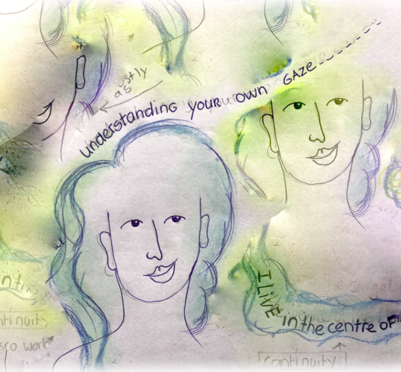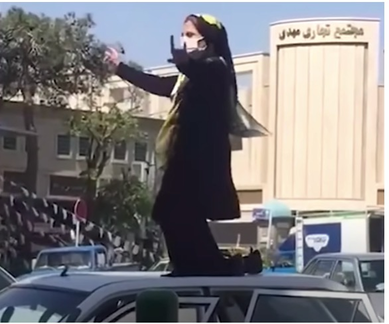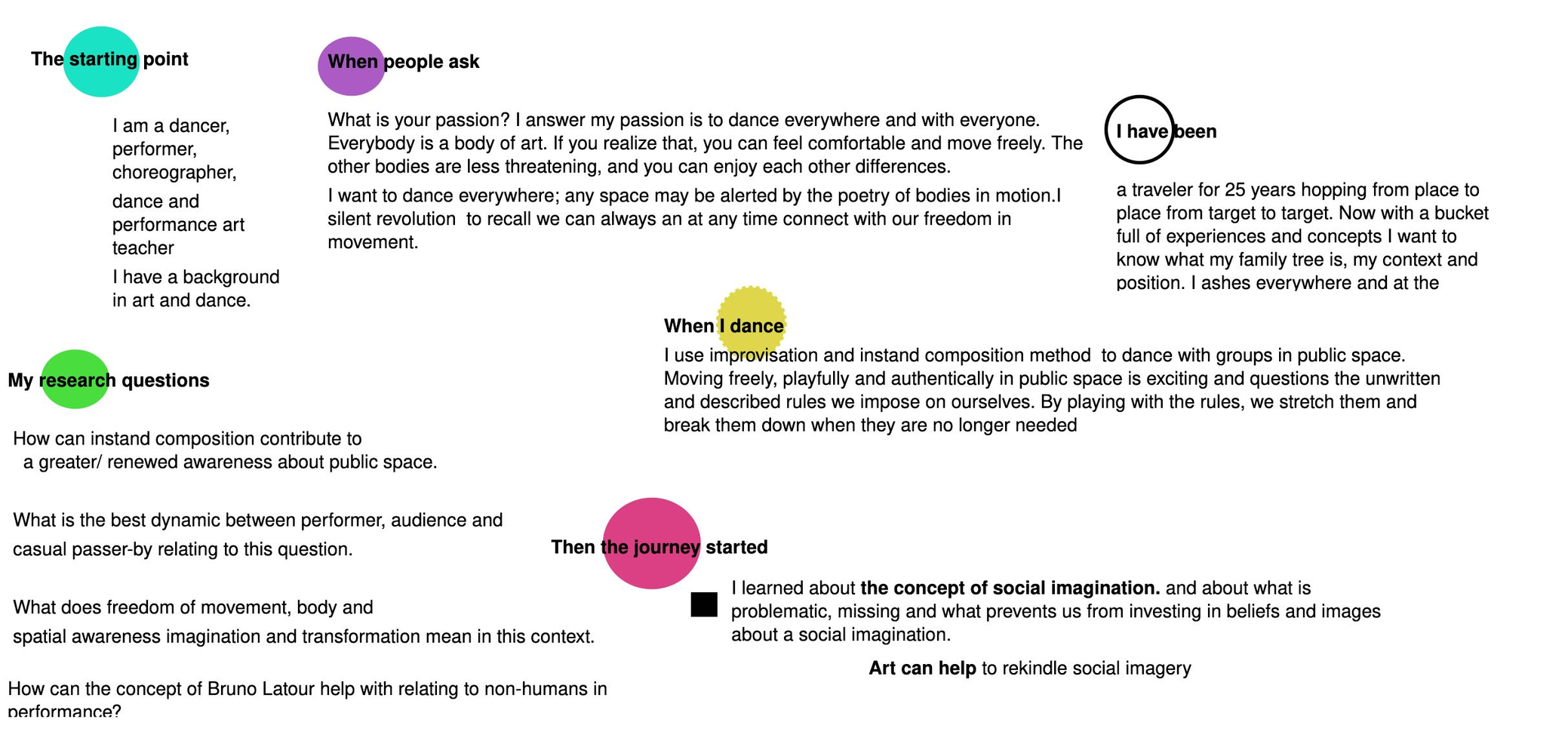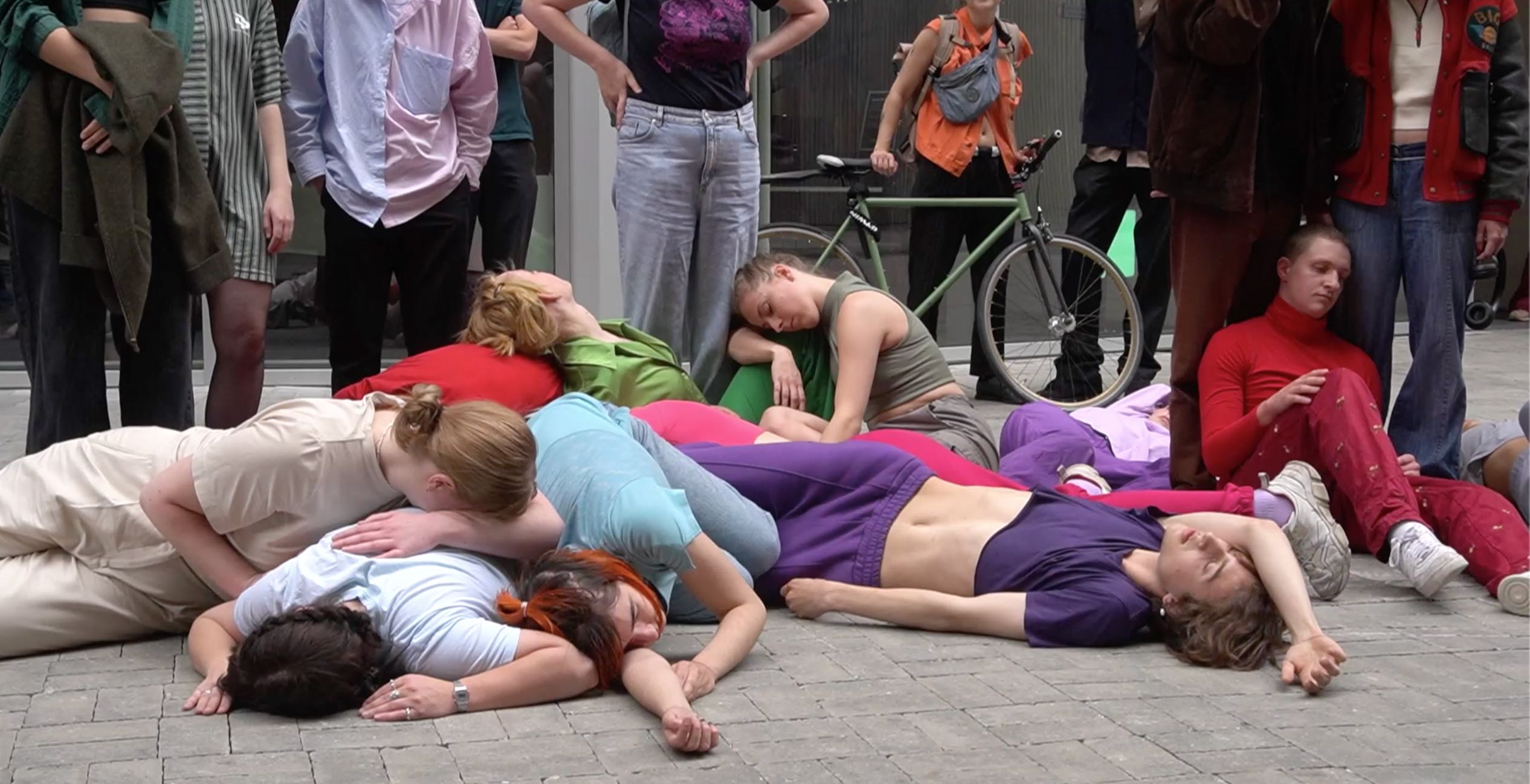My field of interest
Artistic manners to create, awareness about; how are body moves in public space, how we move together and how publicspace affects our posture and behavoir.
Artistic manners to question; authority, borders, uniformity, personal expression, creativity , imagination, play and dance in the public space.
to create a protest against indifference and a ode to curiosity to be able to look at things and people over and over again with an unbiased view of equality
Performance and Flasmobs, short art performances in daily live.
lively relationship between performer, audience and
casual passer-by.
Dansimprovisation structures, instant composition, danstheatre , mime and opera buffo.
Mapping Nottingham’s an introduction
values of people in a neighbourhood. With the great need to "together ensure the liveability of a neighborhood.
together means everyone involved, people who decide, people who live people who work, scientists, artists interdisciplinary collaboration
talking and working with and about place, identity, heritage, and co-creation.
I am a dancer, performer, choreographer,
dance and performance art teacher
I have a background in art and dance.
When people ask
What is your passion? I answer my passion is to dance everywhere and with everyone. Everybody is a body of art. If you realize that, you can feel comfortable and move freely. The other bodies are less threatening, and you can enjoy each other differences.
I want to dance everywhere; any space may be alerted by the poetry of bodies in motion.I silent revolution to recall we can always an at any time connect with our freedom in movement.
This blew my mind
Threefold understanding of spatiality' consisting of, 1.the practice space, the perceived physical experience, the representation of space, 2. the mental experience, constructed dominant concepts. 3.And spaces of representation. The lived social experience in the (dominated) representation space.
We tryed to put our ideas into
research categorie words D. helpt us.
And suddenly I had a great title!
What is 'artistic research'
I actually did not know. I did artistic resarch for my projects
I always asked my self a question about the content and about the form.
But always to make my design beter. Not to create develop "new" knowledge
Now ( week 50) I know the difference.
When I dance
I use improvisation and instand composition method to dance with groups in public space. Moving freely, playfully and authentically in public space is exciting and questions the unwritten and described rules we impose on ourselves. By playing with the rules, we stretch them and break them down when they are no longer needed
I learned about the concept of social imagination. and about what is problematic, missing and what prevents us from investing in beliefs and images about a social imagination.
Every city,every country has
its own social choreography
the way people move
as individuals
as men women
with eachother
with materials
with and in
space
Bok 9 gave a lott of insight about social movements in the sence of artistic activism, social engaged arts, anti-post and decolonization.
Embodying city centers
Questioning imposed social movements
by creating alternative social choreography
Obersvation
Because of Bootcamp experience Kitt Johnson I have tools to observe
as I started to do in PA3 where we had to do experiments.
What kind of social choreography do I encounter?
I have been
a traveler for 33 years hopping from place to place from interest to interest. with a bucket full of experiences and concepts I want to stop for a moment and deepen the work.
Imposed social movements
We have historical constrains of rase, gender, sexe, class, age etc..
We have inhebitions , meaning unable to act in a relaxed and natural way because of self-consciousness or mental restraint.
And we are oppresed in subservience by the unjust exercise of authority.
My keyword is freedom of movement
In the research in non-western countries this word hase a total different meaning than my flower power dutch uppermiddel class idea of freedom off movement. Got to do something with it
The Dutch and their bubbles, coaches say the world is sick beause of disconnection. when I was In indonesia on a moped I felt carried away by a natural flow of a social choreography of 1000 mopeds bicycles and cars
We embodie together a citycenter
But here in the north, we live in bubbels
We do not realise we have to look connect take care
we have to move together otherwise their will be accidents
CRISIS! how do I connect my first research question with my beautiful new title!
Because is it now about inhibited suppressed movements or freedom of movement? ARCH!
We must remember that we are medium-sized land mammals. Because if you forget that, you're going in the wrong direction.
Embodiement of a city, embodiement of a group embodiement of your live.
Somatic-movement. Laban analyse, Okido-yoga and Butho ways of traing the body to understand embodiement and to create from embodiement.
Via bok 9 researching non western social engaged arts
I found Dance as a protest in Arabic countries and It blew my hart.
New materialism yes! To research how to relate with humans and non humans. To relate in a different way with nature more empathy better balance of power. yes!
Sonja Jokiniemi’s odd world is an utopia. Against growing normalisation .. she proposes a very personal version of counterculture, where the inhibited, different, unvoiced side of each one of us would be seen as optimistic hope for revolution.
Article Dancing into Alternative Realities: Gender, Dance, and Public Space in Contemporary Iran. Wauw! I have to do something with this
Freedom in dance improvisation is not a goal but a process. improvisation is lively, urgent, playful, intelligent, spontaneous interactions with constraint”
Foulcault wrote about the practice of freedom, and emphasizes structures that discipline bodies and that are impossible to ignore as realities of history, but, he also recognizes that improvisation allows for movement within those structures, if not ultimate escape from them.
Tight spaces; constrains as norms of race, gender, and sexuality, who determine and constrain the possibilities of movement at particular times and places for particular groups of people;
PA3 ; experiments yes! I am going to talk to a mattress in the street , make art with garbage bags! I'm going to do what Sonja does in the theater in the street yes! I'm ready!
Tights spaces, constrains, they are also the form against which the improviser improvises or seeks to move in new or different ways.
What kind of city centers
do i want to research?
Is it usefull to look at
non-western city centers
to find out how it works here?
read Jan Geldern
Tight spaces
Can I use this concept
for experiment?
Is this a good translation
in dance of
Empossed
inhibited?
Foulcault and the practice of freedom,
I need to know how my research relates
to power structures also
impossed by architecture.
I have deepened my questions and found resources to deepen them even more.
I found new aspects that I need to explore if they fit my project, namely, new materialism and protest dance.
I have to look separately at what is freedom and what is oppression in public space. And put this next to freedom and limitations as they are used in improvisation and choreography
I realise
I see everything from te perspective of a dancer.
and teacher, I can not see myself in the capacity
of my artistry. from the outside in.
Now I have tools to see myself
in context and In position.
In the first period you learn the basic rules of master education.
And I learn to read and write again in English as a dyslexic person.
learning about artistic research is very exciting, the explicit knowledge and the tacit knowledge you are trying to dig up.
My pitfalls
Be on time with the box, even if they are not ready sent them anyway.
Make a clear agenda for coaching. With time for the research project.
Find buddies to help when needed.
Make a realistic timeline.
Schedule experiments and own readings.
Don't deconstruct too much, build.
Try now to think backwards create a idea for
alternitive social choreaography and plan from there to now
Communicate with people, peers, friends, and employers
Create audience.
Research of content
Understand the flow of social choreography.
The concept of freedom in general concept,
as a concept of Foucault, practicing freedom.
As a concept of improvisation dance.
Dance as a protest.
How futurism-dada- situationist -Fluxus protest?
Oppress and inhibited movements
Freedom and emancipation.
Historical constraints
Emancipation my own history,
my country, and city
Research of form
improvisation, contact improvisation, choreography, instant composition,
The approach of the body, and communication through performance.
The role of sound, the role of probs (?)
Creating means.
With whom,
The interaction between performers, audience, and by-passers
Research of City centers





